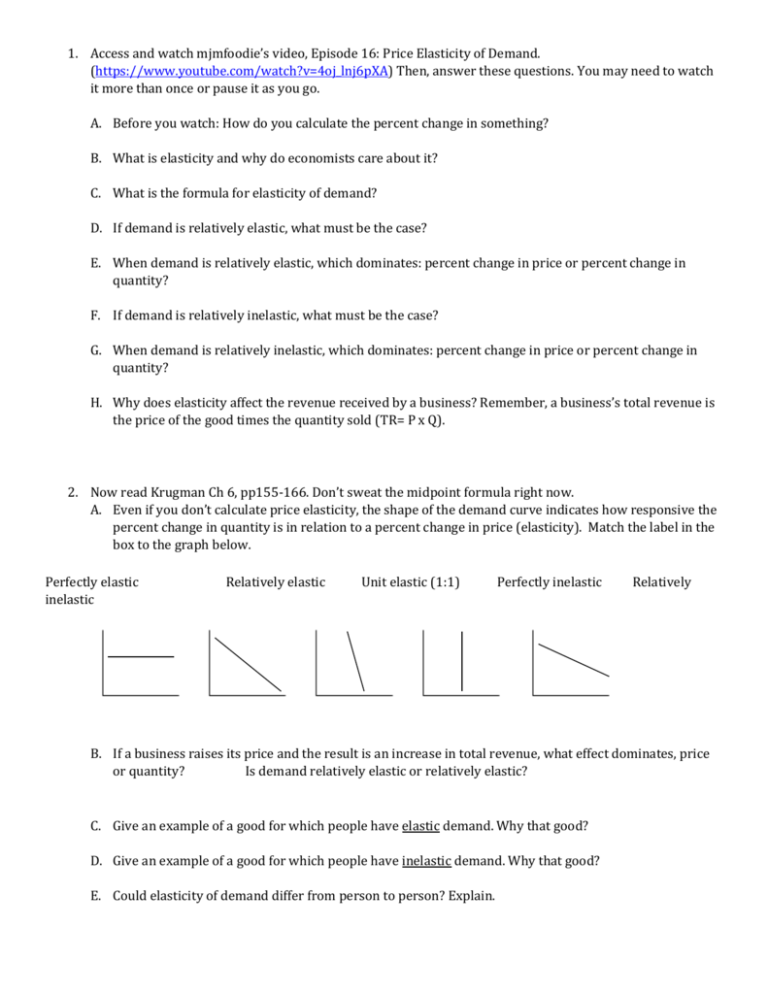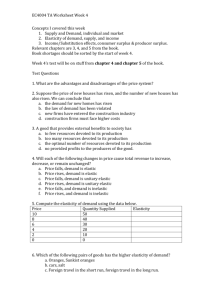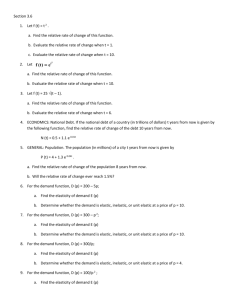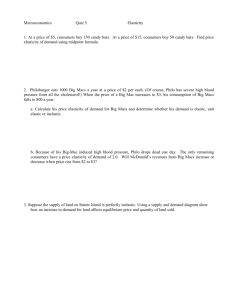Intro To Elasticity Homework
advertisement

1. Access and watch mjmfoodie’s video, Episode 16: Price Elasticity of Demand. (https://www.youtube.com/watch?v=4oj_lnj6pXA) Then, answer these questions. You may need to watch it more than once or pause it as you go. A. Before you watch: How do you calculate the percent change in something? B. What is elasticity and why do economists care about it? C. What is the formula for elasticity of demand? D. If demand is relatively elastic, what must be the case? E. When demand is relatively elastic, which dominates: percent change in price or percent change in quantity? F. If demand is relatively inelastic, what must be the case? G. When demand is relatively inelastic, which dominates: percent change in price or percent change in quantity? H. Why does elasticity affect the revenue received by a business? Remember, a business’s total revenue is the price of the good times the quantity sold (TR= P x Q). 2. Now read Krugman Ch 6, pp155-166. Don’t sweat the midpoint formula right now. A. Even if you don’t calculate price elasticity, the shape of the demand curve indicates how responsive the percent change in quantity is in relation to a percent change in price (elasticity). Match the label in the box to the graph below. Perfectly elastic inelastic Relatively elastic Unit elastic (1:1) Perfectly inelastic Relatively B. If a business raises its price and the result is an increase in total revenue, what effect dominates, price or quantity? Is demand relatively elastic or relatively elastic? C. Give an example of a good for which people have elastic demand. Why that good? D. Give an example of a good for which people have inelastic demand. Why that good? E. Could elasticity of demand differ from person to person? Explain.











